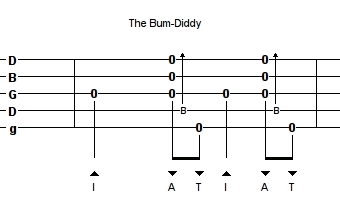With his seminal, 1948 publication (the first edition was mimeographed!) of How to Play the 5-String Banjo, the late Pete Seeger created the first book aimed at teaching “folk” style banjo. I.e., his book was not about classical style for the parlor and not about the minstrel style taught in the late 19th Century; it was about how everyday folks in the mountains and on the farms and in the mines played their traditional and homespun music.
Happily, the book is still in publication (http://www.amazon.com/5-String-Banjo-Music-Sales-America/dp/1597731641) and covers many aspects of playing the instrument. It’s well worth having and makes for some very interesting reading.
In the book, Seeger presented a right-hand technique that he referred to as “a basic strum.” He used this style frequently as accompaniment to his voice, and many of us old “folkies” learned it from his book back in the ‘50s and ‘60s. The style is now often called “up-picking” or “Seeger-style.”
 It’s quite a simple approach: One picks upward on a single string, then a beat later brushes a chord down across several strings using the back of one’s ring (or other) finger, which is in turn followed a half beat later by the sounding of the 5th string downward with the thumb.
It’s quite a simple approach: One picks upward on a single string, then a beat later brushes a chord down across several strings using the back of one’s ring (or other) finger, which is in turn followed a half beat later by the sounding of the 5th string downward with the thumb.
For those who read music, this repeated quarter-note-followed-by-two-eighth-notes is an easy pattern of “one two and three four and”, but many banjo players and would-be banjo players cannot read music. So, to explain this rhythmic pattern, Seeger called it the “bum-titty bum-titty” pattern. There are many verbal things that suffice to demonstrate this oh-so-common rhythm; one of my favorites is “cheese hotdog cheese hotdog.”
Give a listen:
Unfortunately, Seeger’s being the only book available until ca. 1970, many of us learned this pattern and then taught it to others. Furthermore, in his introduction to clawhammer (which he called “frailing”), he applied the same rhythm with the only difference between his up-picked “basic strum” and down-picked “frailing” being whether the single notes picked on the first and third beats were picked upward or downward.
So, I and lots of other people–including many authors of the subsequent method books over the next few decades–learned clawhammer using the “bum-diddy” rhythm, ensuring its place in the banjo lexicon (note that the term has been “cleaned up,” lest someone take offense at the term “titty”).
Fast forward a few decades to Dan Levenson who astutely observed that clawhammer players of old-time music don’t actually play “bum-diddy bum-diddy” all that often. Instead, they tend to play what is sometimes referred to a “bump-a-diddy” or sim ply “diddy diddy diddy diddy,” i.e. a stream of eighth notes (occasionally interrupted by leaving out an eighth note for emphasis).
ply “diddy diddy diddy diddy,” i.e. a stream of eighth notes (occasionally interrupted by leaving out an eighth note for emphasis).
Here’s what this sounds like:
Dan started preaching his “Ain’t No Bum-Diddy” observation, and it has really helped people to learn clawhammer far more easily. So, you’ll find that many modern pedagogical clawhammer approaches don’t even teach bum-diddy, and you’ll also find many who started with the bum-diddy bemoan that fact and the difficulties that it caused in moving forward, especially regarding the incorporation of a technique called “drop thumb.”
Even Pete Seeger himself said he would not have started with that pattern were he able to do it all over! So if you’re just starting out and want to learn to play old-time banjo, do yourself a favor: find a teacher or method that isn’t based on bum-diddy, and teaches you how to get right into clawhammer as it’s most often played.
Great stuff, as always. Everyone of your posts is worth fileing away for reference over and over again.
thank you for helping make me a better banjo player.
Brent
I second ZEPP’s final point. I learned the Seeger way, and it took me a full year, after I was already somewhat adept, to make my thumb pull its weight. Immediately, my playing was more interesting and more complex. (Hey, DZ–what’s your take on index vs. middle lead in clawhammer? I know there’s a lot of good players using index lead, but I recently switched to middle lead and found I immediately felt less tension in my hand and wrist, it was easier double/drop thumbing, and my rhythm improved.)
Exactly! There aint no bum-diddy in CH.
Seeger also said he wouldn’t have started with chords. He said he would have started with notes instead.
I also started with his book and wished I hadn’t. It introduces three or four styles in eight odd pages. Confused the hell out of me. 🙂
Darn I’ve been doing it wrong for almost 50 years! Well as you know something happens after a while and while there are bum-ditties in my playing it is not entirely composed of it.